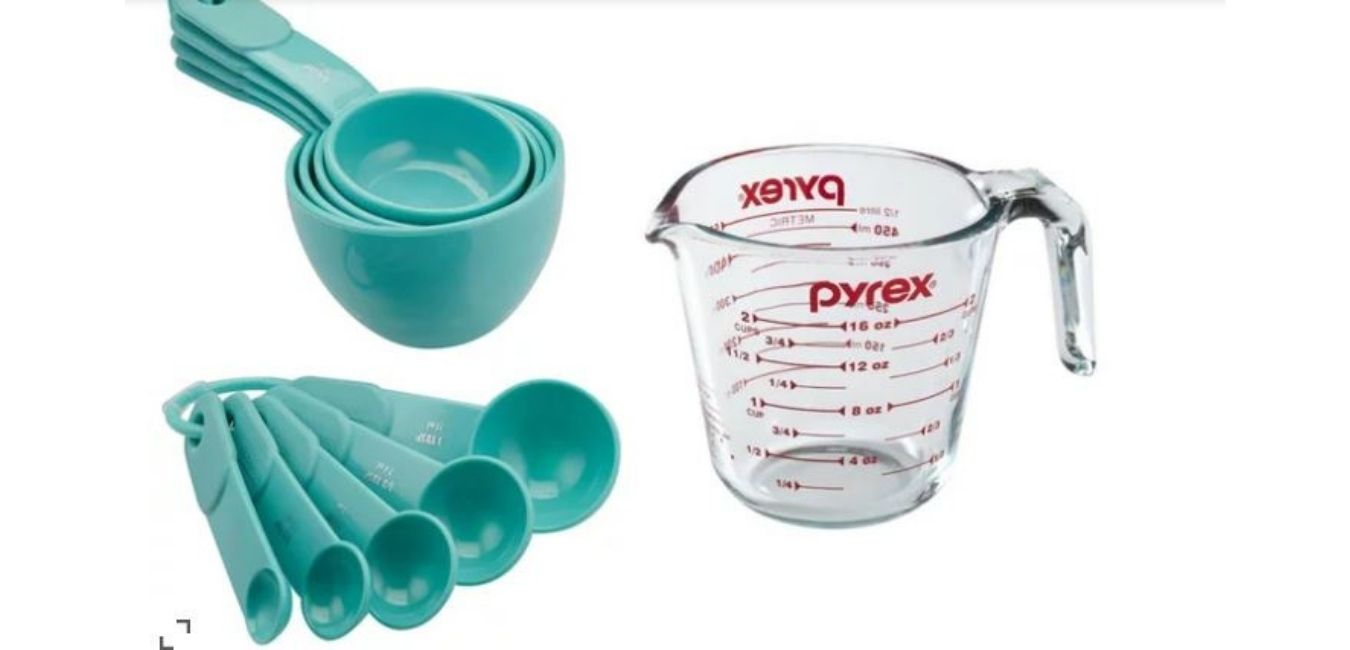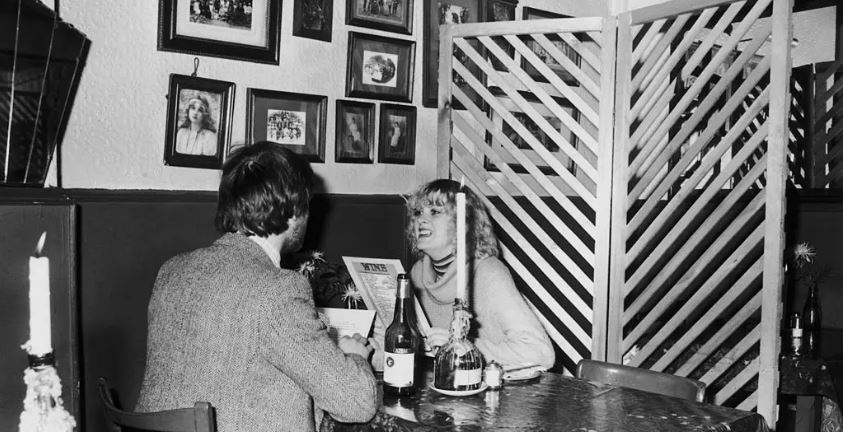Wants to know the steps in calculating fluid ounces, measuring dry ounces, using a kitchen scale to measure ounces? Here are 12 simple steps to follow.
The ounce is the name of several different units of mass, weight, or volume and is derived almost unchanged from the uncia, an Ancient Roman unit of measurement. The avoirdupois ounce is 1⁄16 of an avoirdupois pound; this is the United States customary and British imperial ounce.
If you’ve done any amount of cooking or baking (especially baking) by following a recipe, then it’s pretty likely you’ve seen ingredients measured out in both ounces and fluid ounces. They share a name, more or less, so they’re the same thing, right?
What is the Difference Between Ounces and Fluid Ounces
While ounces and fluid ounces share a similar name and both represent units of measurement, they are quite different. Each represents a different system of measurement: one measuring weight, the other measuring volume.
Ounces Measure Weight
Ounces are a unit used to measure weight. This measurement is most often used with dry ingredients, like flour or sugar, but can also be used for things like honey or yogurt. When a recipe calls for ounces, it’s referring to a specific weight. You may notice baking recipes written in ounces instead of cups — this is because measuring ingredients by weight proves to be more accurate. The best way to measure ounces is by using a scale.
Fluid Ounces Measure Volume
Fluid ounces are a unit used to measure volume, or how much space something takes up. This measurement is used for liquid ingredients, like water or milk. When a recipe calls for fluid ounces, go ahead and pull out your measuring cup; it’s the most accurate way to measure this.
Are Ounces and Fluid Ounces Interchangeable?
Any confusion surrounding these two units of measurement is understandable since they share the same name, and recipes sometimes are not clear about which type they mean.
Also — a fun fact! — a cup of water happens to equal both 8 fluid ounces (in volume) and 8 ounces (in weight), so you might naturally assume that 1 cup equals 8 ounces of weight universally in recipes.
But no, water is the exception rather than the rule. Since fluid ounces and ounces are measuring such very different things, they are rarely the same for most ingredients. Think of one cup of flour and one cup of tomato sauce; they both occupy the same volume of space (i.e., 8 fluid ounces), but they have very different weights (about 4 ounces for the flour, and about 7.9 ounces for the tomato sauce).
So no, fluid ounces and ounces should not be used interchangeably. Pay close attention when reading your recipe to make sure you’re measuring correctly!
Depending on the recipe, ounces can be a measurement of volume or weight. Fluid ounces are a measurement of volume, whereas dry ounces are a measurement of weight. As long as the ingredient is measured carefully, dry or liquid measuring cups should give you a simple and accurate calculation. For the most precise reading, use a kitchen scale to measure your ingredient.
Calculating Fluid Ounces
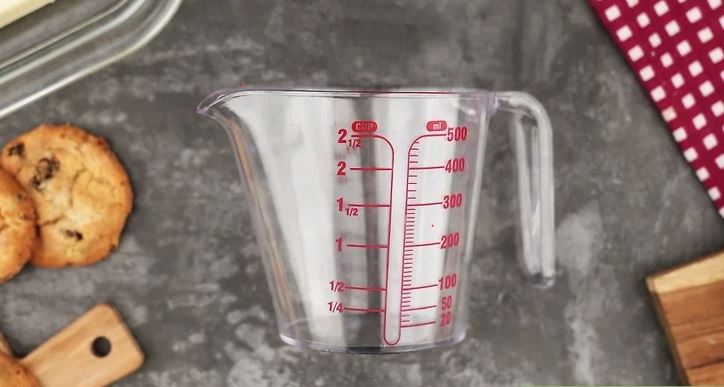
1. Use a fluid measuring cup if you are handling a liquid.
The measuring cup used must be for fluid ounces if measuring a liquid. Dry cups will not give as accurate of reading because they are designed to measure weight instead of volume.
2. Place the measuring cup on a flat, stable surface.
Choose a measuring cup that measures in ounces or can be easily converted to it. Lay the cup on as even of a surface as possible, like a table.
- Avoid holding the cup in your hand while measuring, as the reading will be slightly off.
3. Pour the liquid to approximately the desired line.
Fill the measuring cup until it reaches slightly underneath the level you are hoping to reach. Squat down until you are about eye level with the line to check your measurement, as looking from above can give you a warped measurement.
4. Adjust the measurement until the bottom of the meniscus reaches the line.
While measuring liquid ounces, you may notice that the top of the surface is not even and may curve along the edges. This curve is called the meniscus. For the most accurate reading, the bottom (not the top) of the meniscus should reach the desired line.
Measuring Dry Ounces
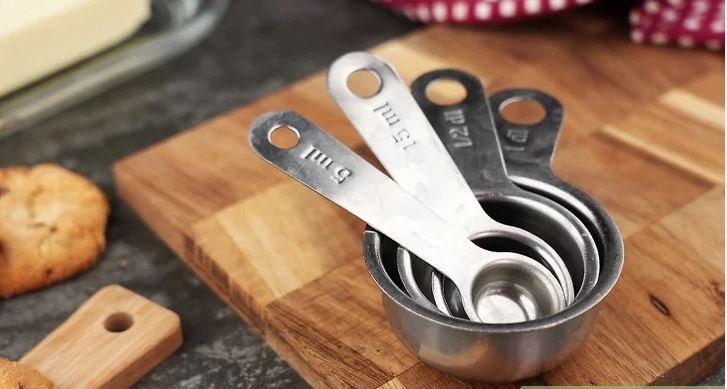
5. Use dry measuring cups for solid ingredients.
Dry and liquid ounces are slightly different measurements. While dry ounces are a measurement of weight, liquid ounces are a measurement of volume. For solids, choose a dry measuring cup that uses ounces or something that can be easily converted to ounces.
6. Put the ingredient being measured in a wide-mouthed container.
You will be better able to put the measuring cup into the container if it has a large, open mouth. If the ingredient is not currently in an open-mouthed jar or bag, pour it into a bowl before you measure it.
7. Dip a measuring cup into the container.
Use a measuring cup that marks ounces or that can be easily converted into ounces (like cups). As you lift the measuring cup out of the ingredient, let it overflow from the top. You can even the measurement out later on.
8. Use a knife to level off the measuring cup.
Scrape the back of the knife over the top of the measuring cup to even out your measurement. Level the ingredient off over the bowl or container so it can catch anything that falls off the top of the measuring cup.
- Any utensil with a straight, flat edge (like a spatula) can be used as an alternative to a knife.
Using a Kitchen Scale
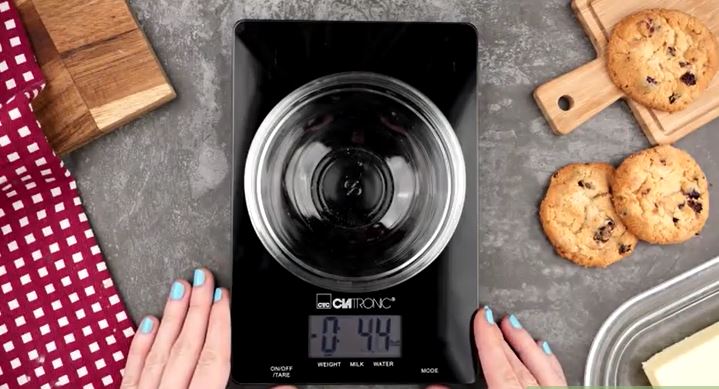
9. Weigh the cup on a kitchen scale to check your measurements.
After you have leveled off the cup, it should be accurate. But if you want a more precise measurement, place the cup on a kitchen scale that can measure in ounces. Compare the scale’s reading to your initial measurement to determine how accurate your measuring cup is.
10. Zero out the measuring cup’s weight.
Place the empty measuring cup on the scale before you fill it with the ingredient. This will allow you to get the exact measurement of the ingredient in ounces. If you have a digital scale, hit the “on” or “clear” button to zero out the weight.
- If you have an older, mechanical scale, turn the knob back to the zero mark after placing the measuring cup on it.
- For balance scales, set the pointer to the center mark.
11. Fill the measuring cup with the ingredient and place it on the scale.
Lift the measuring cup off of the scale and add the ingredient you want to measure. Adjust the ingredient amount by adding or removing it until it reaches the desired amount of ounces.
- Make sure the scale is set to ounces before measuring your ingredient.
12. Weigh each ingredient separately if weighing multiple items.
Use different measuring cups to keep the ingredients separate. Remember to zero out each cup before recording the ounce measurement for the most precise reading.
Credit: WikiHow

